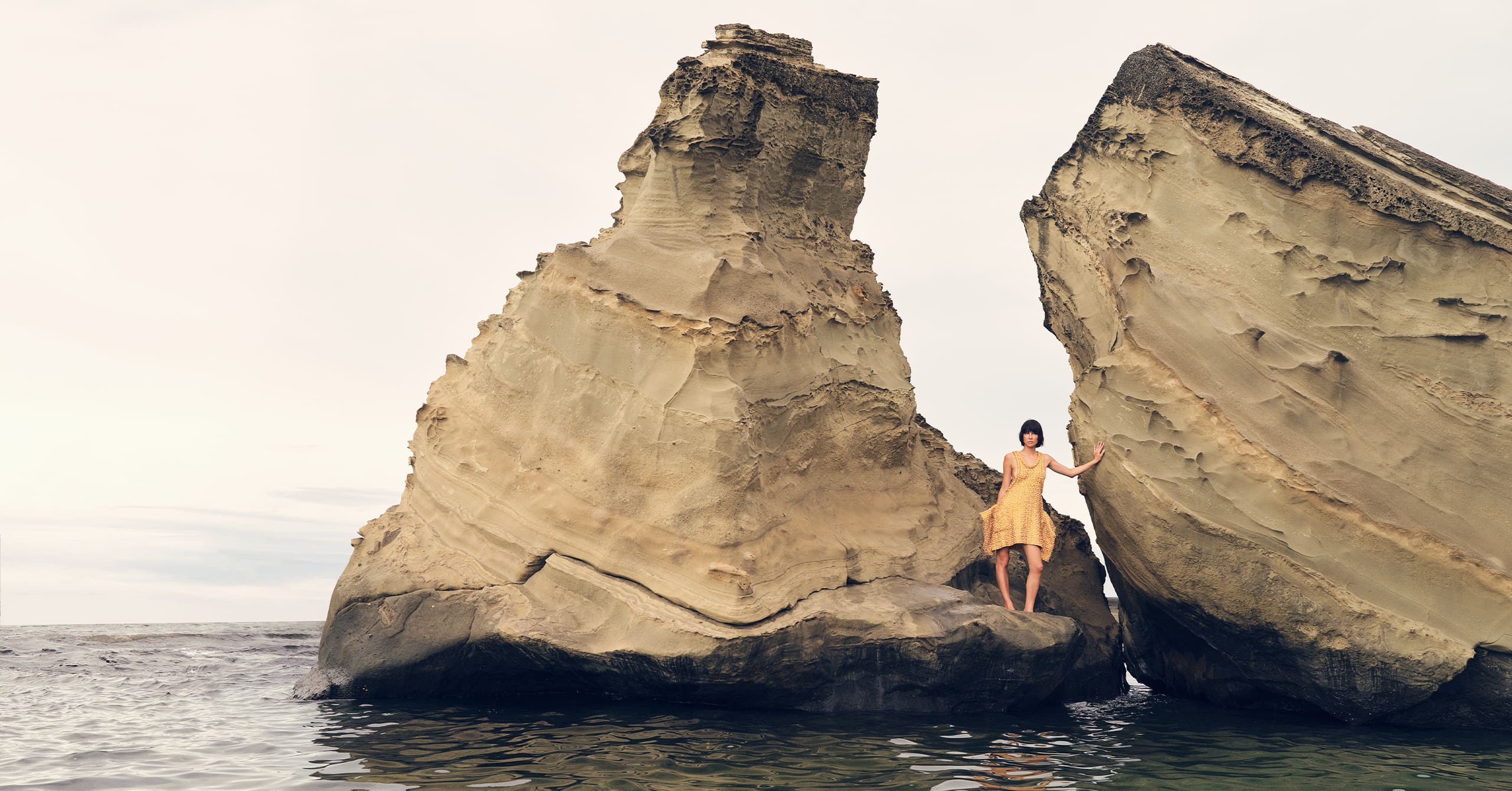LOUIS VUITTON Gold Tweed Dress, B Blossom Ring, Yellow Gold, White Gold, and Diamonds, Louisette Macro Earrings. Sharif Hamza
HA.MU peach cloud dress. Sharif Hamza
Welcome to the wonders of Las Islas Filipinas
To get to the edge of the world, you need to walk on a wooden footbridge that traverses a dense mangrove forest.
Depending on the height of the tide, you can wade the rest of the way, crossing tide pools, muddy streams, and golden beaches, passing oddly shaped rock apparitions until you hear whoosh of the ocean. It’s a thunderous sound, like never-ending applause or a hard driving rain. But the noise is just the sound of the waves beating upon the rocky coastline and the windy echoes that reverberate through the cliffs, those craggy rock formations that have stood sentinel on the shores of Northern Samar for millions of years.
Welcome to Biri, an island in the Visayas, one among over seven thousand in the archipelago of the Philippines.
Samar was one of the first islands to be called “Las Islas Filipinas,” a name given by the 1543 Spanish expedition headed by Ruy Lopez de Villalobos in honor of the Prince of Asturias. Coming ashore in the 1500s, the Spaniards immediately learned just how significant the boat was to Filipino culture. Most Filipinos lived along the seacoast or on riverbanks and their lives were centered on the balangay, the oldest type of watercraft to be found in the Philippines.
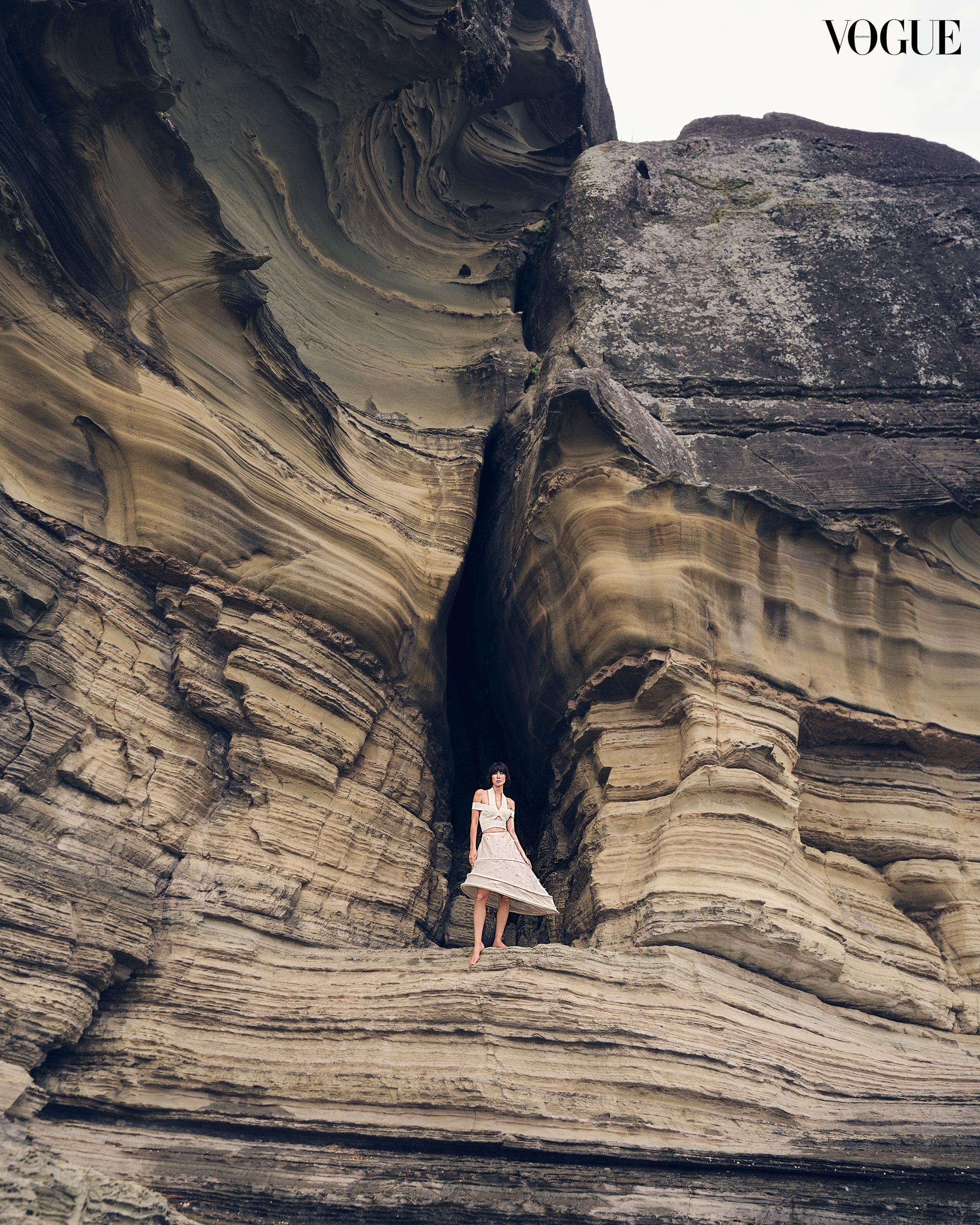
“Regaining our archipelagic consciousness is a regenerative process, like the ebb and flood of the tides, which pull life out and carry it back in”
The balangay, an Austronesian word for sailboat, was instrumental in the Austronesian settlement of the Philippines, transporting families and cargo across oceans thousands of years ago. These voyages mapped out trade routes that would put the archipelago at the heart of a network of commerce and cultural exchange with Arab, Indian, Indonesian, and Chinese merchants long before the arrival of the Spanish.
“Traders and raiders, friends and foes crossed from one side of a river to the other by boat, from island to island, and from distant ports on the same island,” the historian William Henry Scott wrote in Barangay, an important ethnographic account of 16th century Philippine life as the Spanish discovered it. “Communities were connected, not separated, by water.” These small communities were also called barangays, modeled after the boats their ancestors came in, each ruled by a datu, who would also have been the barangay captain.
Our Filipino roots as islanders, voyagers, and seafarers have long been established, but centuries of colonization and urbanization have erased much of this history and of our relationship with the sea, that many Filipinos living along the coast today, even fisherfolk, lack the life-saving ability of knowing how to swim. Others have developed a fear of the water. Even the adventurer Carina Dayondon, the first Filipina to climb the Seven Summits, was initially hesitant to join the Balangay Voyage of 2009, an expedition that would retrace the ancient trading and migration routes on a replica balangay using only the tools of celestial navigation. Carina, who had scaled mountains in the most extreme weather conditions, was filled with anxiety at the thought of being out on the water, believing she was only good for the land. She ended up sailing on the balangay for 17 months and even joined its subsequent voyage to China. “The balangay anchors us to who we are as an island people,” she said after the experience.
The intensifying disasters wrought by climate change are forcing us to reckon with our archipelagic nature. Ours is a country where the total area of water is greater than land, and where the influence of the oceans and the seas extend far inland, beyond the coastlines, through the plains and up the mountains.
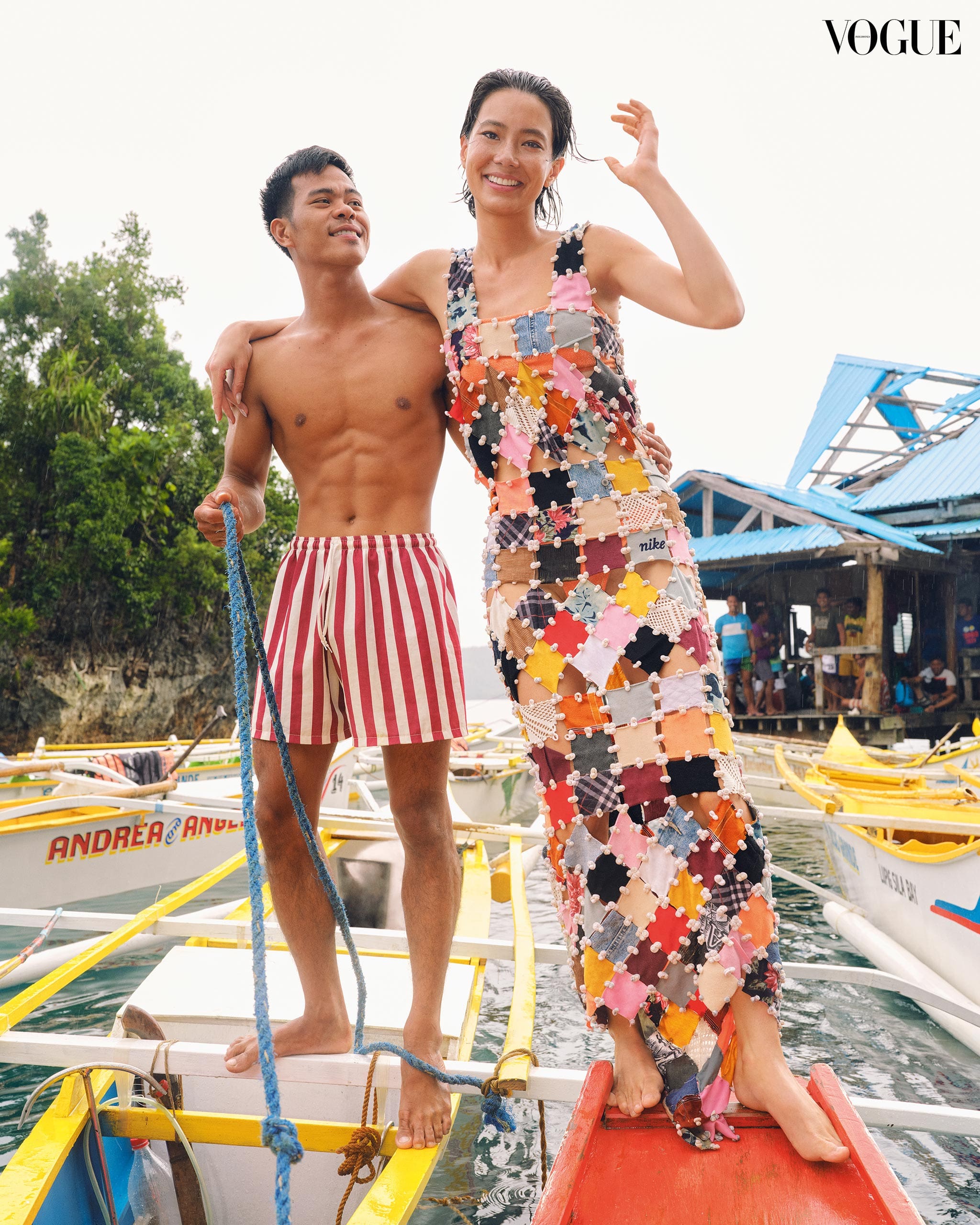
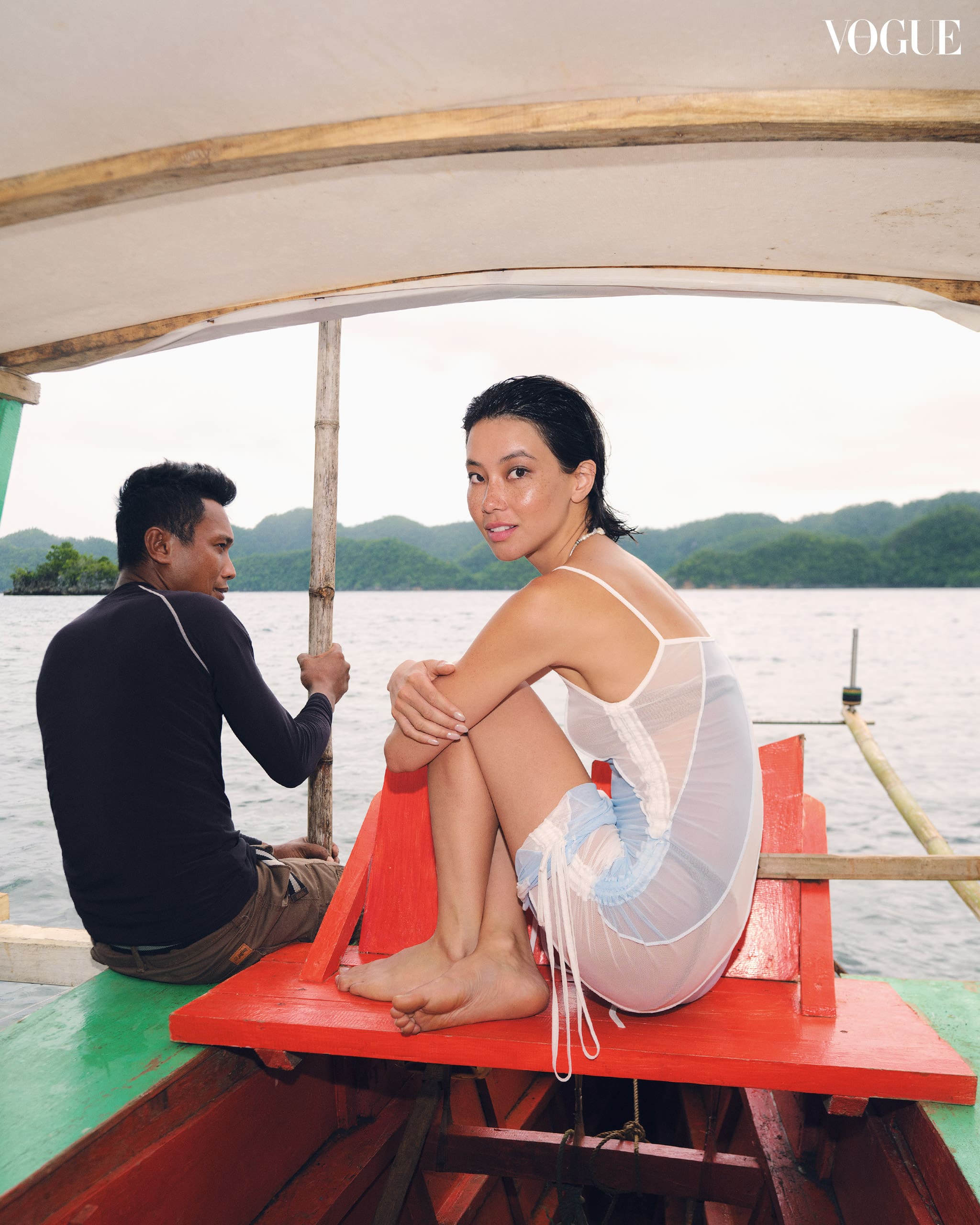
When Nicola Sebastian, a Filipino writer, visited the eastern seaboard of Samar in the aftermath of Typhoon Haiyan, one of the most powerful typhoons to ever make landfall, she began to question how the geography of the Philippines shaped how Filipinos related to ourselves, each other, and the world.
She would come to learn the term for this pattern of consciousness: archipelagic thinking. In contrast to the continental thinking of Empire, the Philippines is often thought of as “only islands, small, scattered, humble, inchoate, transient, on the margins,” Nicola says. “To consider the archipelago is to allow ourselves to embrace and play with the paradoxes at the heart of our island identity. Isolated yet connected, vulnerable yet resilient, they offer, in the words of Caribbean writer Edouard Glissant, a “diversity stretched out across the world that joins shores and horizons together.”
Together with Hannah Reyes Morales, David Loughran, and Samantha Zarandin they formed the La Union-based arts residency Emerging Islands around this theoretical framework, connecting artists with coastal communities to explore the urgent ecological issues of our time.
As archipelagic citizens, we are encouraged to see the sea not as boundaries between discrete islands, but as a connective tissue through which everything flows, from language to religion and technology, as well as the more contemporary problems of plastic waste, coral reef destruction, coastal erosion, and more. Raising awareness around the complexities of living in such a dynamic ecosystem can inspire new policies that better manage our maritime environment and protect our most vulnerable communities. Regaining our archipelagic consciousness is a regenerative process, like the ebb and flood of the tides, which pull life out and carry it back in.
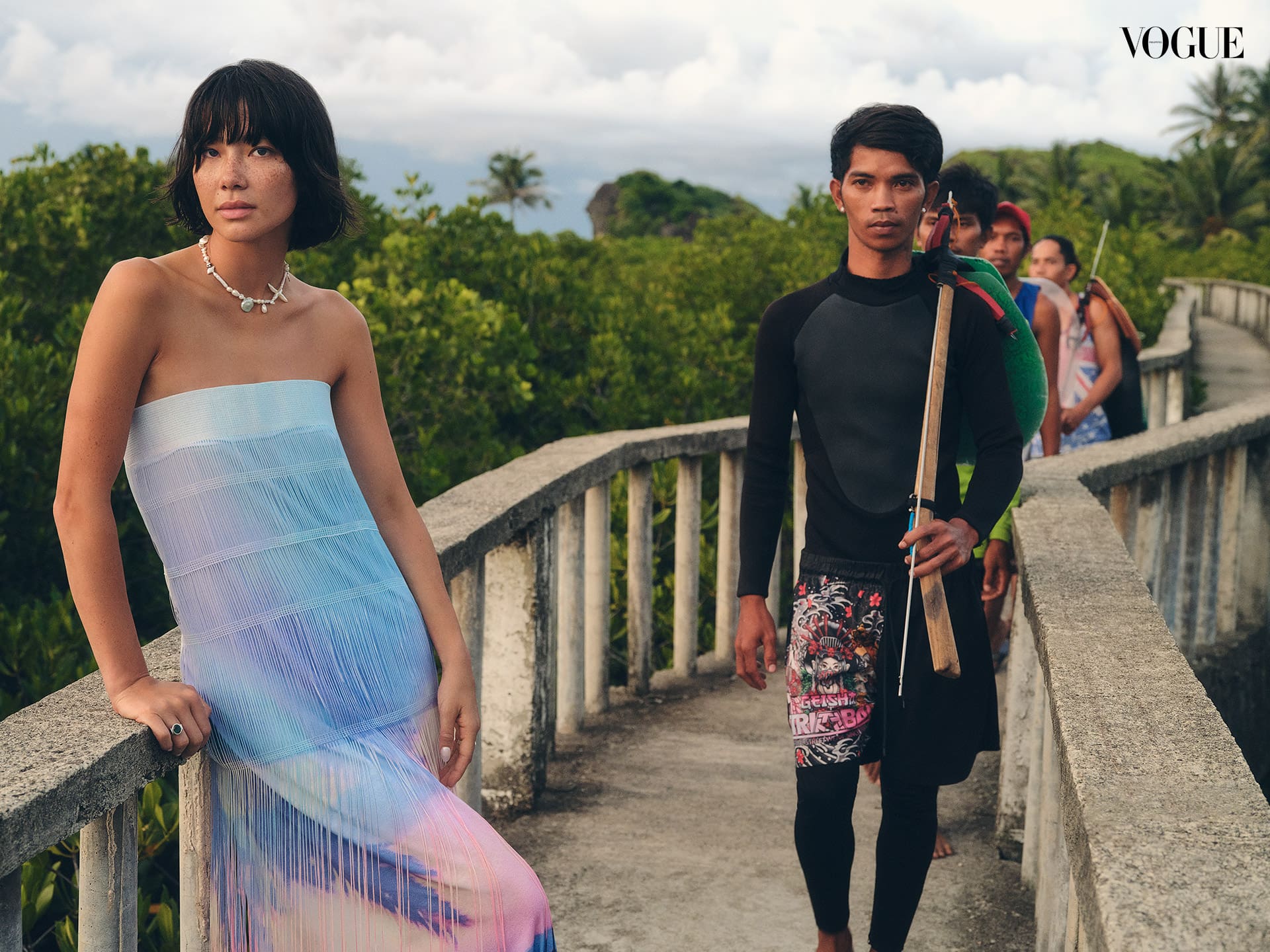
Vogue Philippines makes its global debut with a voyage through the three main islands of the Philippine archipelago—Luzon, Visayas, and Mindanao. We invited Sharif Hamza, a British Filipino-Egyptian photographer, and Chloe Magno, a half-Filipino, half-American model from California to leave the skyscraper forests of New York and enter a world quite different from what they may know of the homeland of their mothers. Having worked together previously on a beauty feature for Vogue UK about the importance of Asian representation, Sharif and Chloe found it particularly meaningful to be representing in the Philippine iteration of Vogue.
On the southern island of Mindanao, where they both claim heritage—Sharif in Sultan Kudarat, Chloe in Davao—they first land in Bucas Grande, a group of islets, or rather a network of lagoons dotted with bushy karst hills, hidden behind the more famous surf island of Siargao.
“Let’s show the world how beautiful the Philippines is,” Sharif instructed the crew at the first of their 4 a.m. call times. “Not just in terms of landscapes, but also the beautiful women who shape our lives. Let’s do it for the Philippines, but also, let’s do this for our mothers and grandmothers who have nurtured us to become who we are as individuals.” With a few teary eyes and the tone set for the entirety of the shoot, everyone was raring to dive right in, often literally.
In Bucas Grande, the only way to get around was by banca, and so the team boated—just like in the old days—from resort to lagoon, cave to cove, to the stingless jellyfish lake, which was unfortunately rained out of jellyfish. No problem because Chloe became the jellyfish, nearly bioluminescent in a bell-shaped Rajo Laurel number.
Traveling up to the Visayas, the crew arrived in Northern Samar where they clambered and swam to the Biri Rock Formations, six bluffs that front a tumultuous part of the sea where the San Bernardino Strait meets the Pacific Ocean. Formed by shifting undersea tectonic plates, the rocks have been further fashioned and grooved by the pummeling of waves over several epochs. Against this majestic backdrop, sometimes inside the crevices, Chloe was captured in striking silhouettes and textures that mimic the environment, including a sculpted metal headpiece by artist Jinggoy Buensuceso that looks like it was carved out of the rock.

The last leg of the trip back in Luzon was the shortest but most physically challenging. The hike up the Tinipak River in Tanay, Rizal, was slippery from recent rains, but you couldn’t tell from the smile on Chloe’s face as she conquered a boulder in bare feet and a frothy blush creation from local indie label Ha.Mu. “I’ve never taken so many smiling pictures before,” Sharif says in disbelief. But Chloe is irrepressible, especially during the in-between takes where she jumps right into barangay life—riding the habal habal, playing basketball with the kids, just hanging like a local.
“There are no words to describe the hidden gems we visited,” she says. “The crystal-clear waters, the people we meet along the way, the food, and just the overall culture of the Philippines is just so warm and genuine.”
It might be cliché to be touting the hospitality that Filipinos are renowned for, but it’s no myth. The people they encountered at each stop made every foreigner feel at home and every Filipino proud of this pile of rocks we call the Philippines.
“This trip was all about joy,” Chloe says. “To be Filipino is joy.”
Art Director: JANN PASCUA. Makeup: ROBBIE PIÑERA. Hair: RAYMOND SANTIAGO. Photographer Assistants: TIM HOFFMAN, SHEN WILLIAMS-COHEN, ARTU NEPOMUCENO. Model: CHLOE MAGNO. Fashion Associate: RENEE DE GUZMAN. Producer: ANZ HIZON.



See the entire cover story in Vogue Philippines’ September 2022 Issue.
